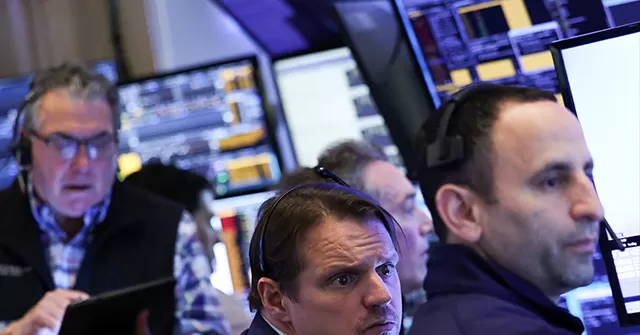The stock market is a volatile arena where highs and lows are constantly at play. In times of a bull market, where stock prices are on the rise, there is a sense of uncontrolled enthusiasm and optimism among investors. However, the opposite holds true during a bear market, when stock prices plummet and uncertainty takes over. It is during these times of turmoil that prophets of doom come out of the woodwork, with their dire predictions and apocalyptic views. As the recent tariff tantrum has caused a frenzy of fear among economists, it is important to take a step back and not fall prey to the negativity and panic.
Breitbart Business Digest showcased the panic and chaos that has ensued after President Trump announced his plans to impose tariffs on steel and aluminum imports. Many economists and experts have raised concerns about the impact of these tariffs on the economy, citing potential job losses, inflation, and a possible trade war. While it is important to consider these factors, it is equally important to remember that fear and negativity often overshadow the positive aspects of any situation.
The stock market has been known to bounce back from volatile times, and history is a testament to this. During bear markets, investors often overlook the potential for growth and focus solely on the immediate losses. However, it is during these times that opportunities arise, and those who are willing to take a chance and invest strategically can reap the benefits in the long run. As the saying goes, “buy when there is blood on the streets.”
It is also important to note that the recent tariff announcement is not the only factor affecting the stock market. The US economy has been on an upswing, with low unemployment rates, strong corporate earnings, and a boost in consumer confidence. These factors contribute to a strong foundation for the economy, and even if there may be short-term setbacks due to the tariffs, the overall outlook is still positive.
Instead of focusing on the doom and gloom being spread by some economists, it would be more beneficial to look at the opportunities that arise during bear markets. This is a time to reassess investment strategies and identify potential sectors for growth. For instance, the steel and aluminum industry could see a boost as domestic production increases, and other areas such as technology, healthcare, and renewable energy could also present opportunities.
It is also important to keep in mind that the stock market is not the only indicator of the economy’s health. While it plays a significant role, there are other factors such as GDP, inflation, and interest rates that need to be considered. The economy is a complex organism, and it is not easy to predict its movements based on a single event.
In conclusion, the recent tariff tantrum may have caused a frenzy of fear among economists, but it is important to not let the negativity take over. Bull markets may breed irrational exuberance, but bear markets do not necessarily lead to doom and gloom. Instead, it is a time to reassess and strategize for potential growth opportunities. The US economy has shown its resilience time and again, and it is important to remain optimistic and look at the bigger picture. So, don’t let the prophets of doom bring you down – keep your head held high and trust in the economy’s ability to weather this storm.









